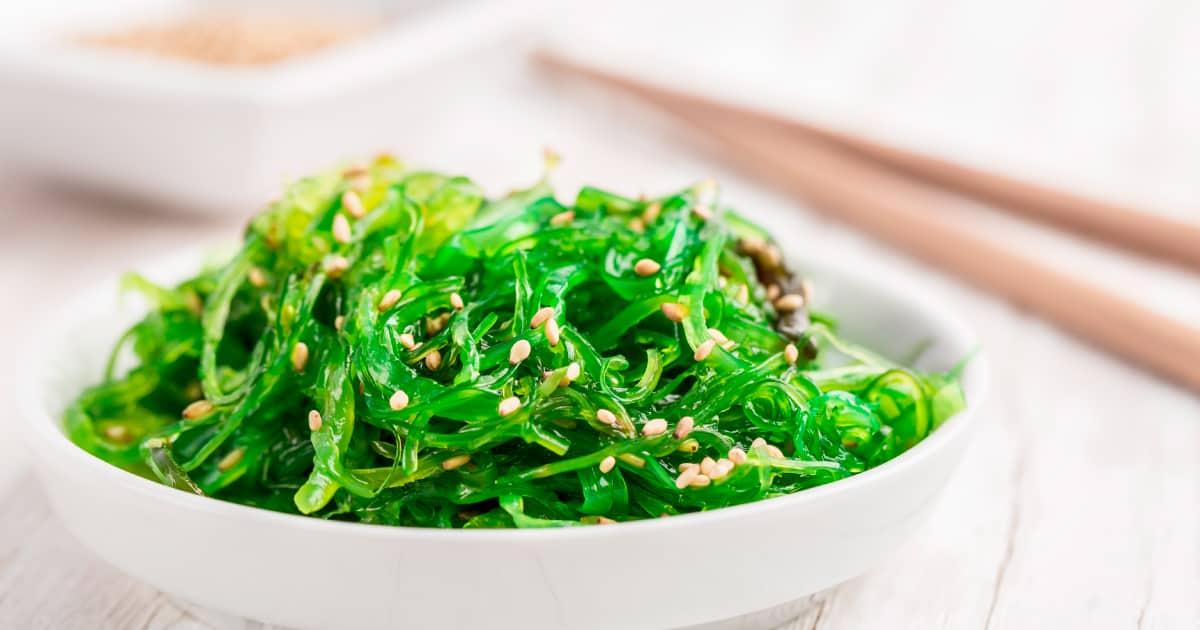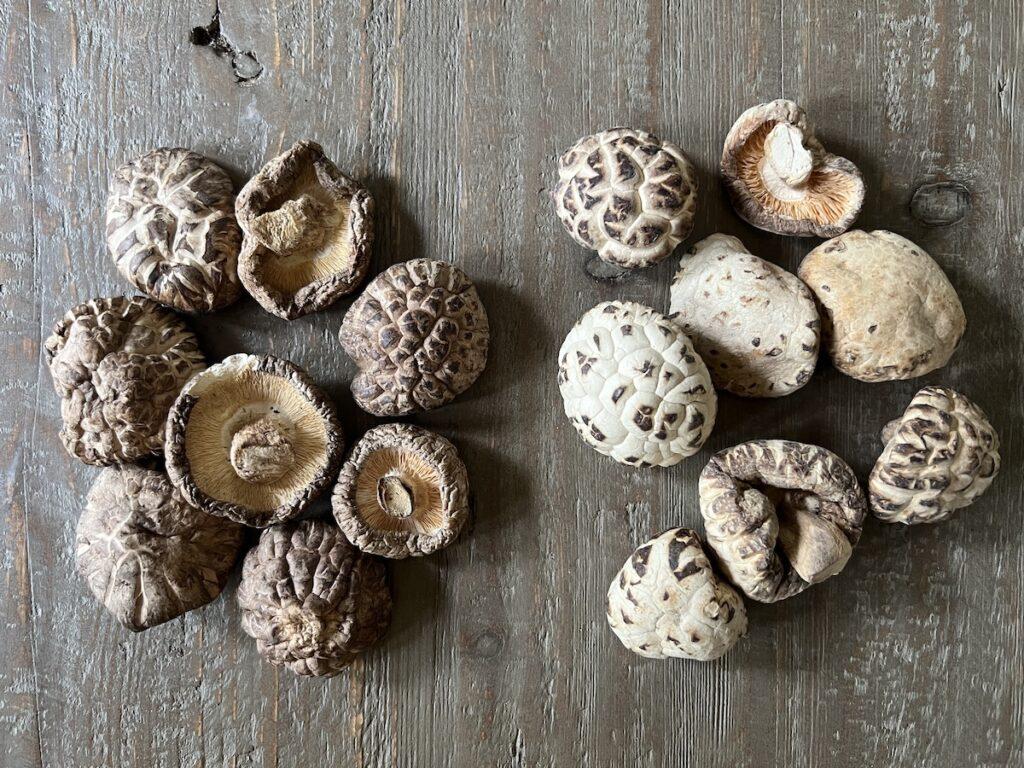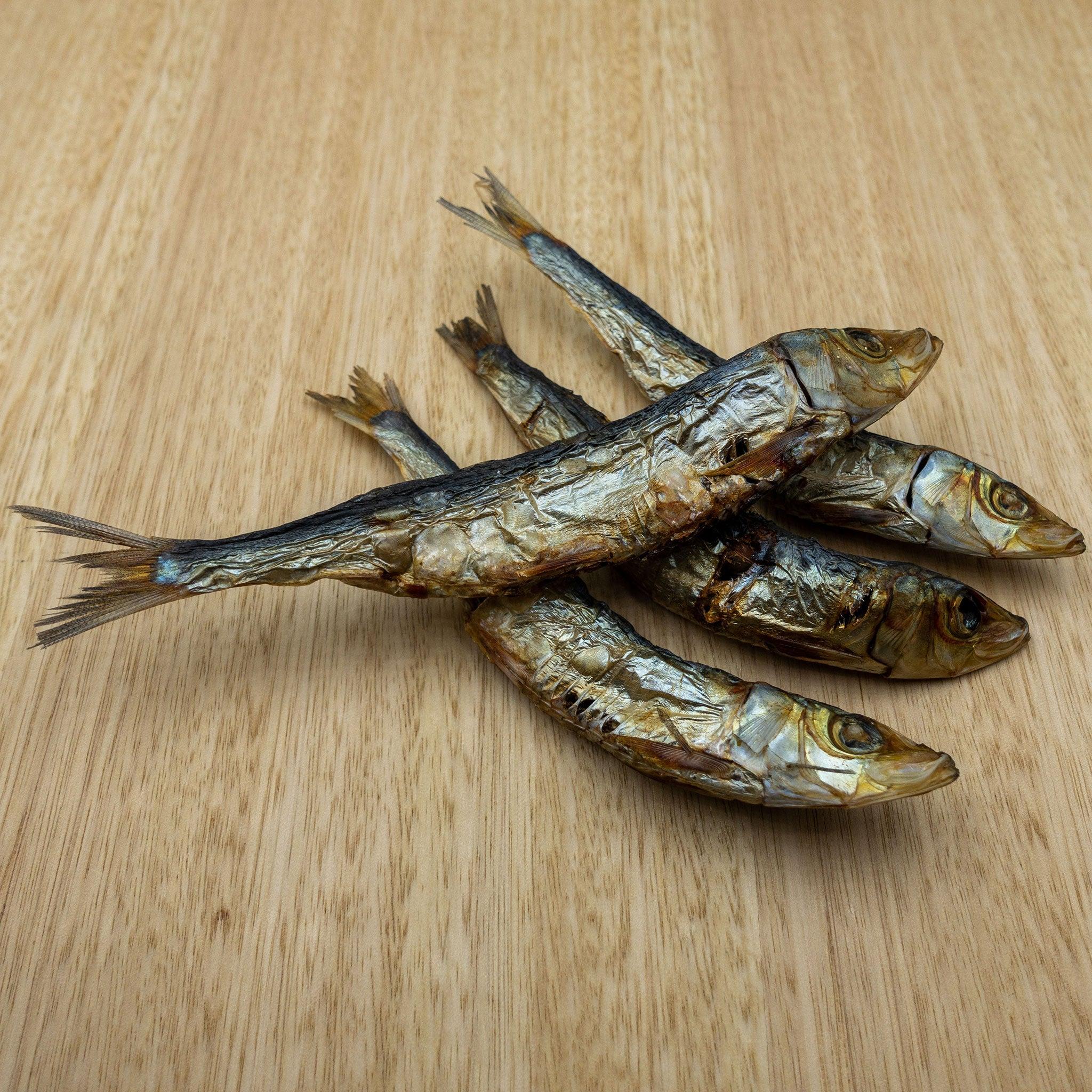
Bonito flakes from dried and fermented fish are a key ingredient in Japanese cuisine, particularly in dashi broth.
Known for their rich umami flavor, bonito flakes add depth to soups, sauces, and various dishes.
However, if you don’t have bonito flakes, several substitutes can provide a similar savory, umami taste.
This list will explore alternatives that can replace bonito flakes while enhancing your recipes’ flavor.
List of Alternatives to Replace Bonito Flakes
1. Kombu

Kombu is a type of kelp that’s commonly used in Japanese cooking to make dashi broth.
It provides a mild, savory flavor with plenty of umami, making it an excellent substitute for bonito flakes in broths and soups.
Kombu is often simmered in water to release flavor, then removed before serving.
| Characteristic | Details |
|---|---|
| Use in Recipes | Broths, soups, sauces |
| Flavor Profile | Mild, savory, rich in umami |
| How to Use | Use kombu in equal amounts to replace bonito flakes in broths or soups. Simmer and remove before serving. |
2. Nori (Seaweed)

Nori, the dried seaweed commonly used in sushi, can be crumbled and added to dishes as a substitute for bonito flakes.
While nori doesn’t provide the same fishy flavor, it still brings an umami-rich, slightly salty taste to soups and sauces.
It’s an excellent vegan alternative to bonito flakes.
| Characteristic | Details |
|---|---|
| Use in Recipes | Soups, broths, salads, rice dishes |
| Flavor Profile | Briny, slightly salty, mild umami |
| How to Use | Crumble nori into your dish to taste, adjusting the amount based on the umami you need. |
3. Dulse

Dulse is another red seaweed with a strong umami flavor.
It is a great alternative to bonito flakes, especially for vegans or vegetarians.
Dulse has a slightly salty, smoky taste and can be used in soups, stews, or as a topping for rice dishes.
It’s rich in minerals and adds a unique depth of flavor.
| Characteristic | Details |
|---|---|
| Use in Recipes | Soups, stews, salads, rice dishes |
| Flavor Profile | Salty, slightly smoky, umami |
| How to Use | Use dulse in small amounts as a substitute for bonito flakes, adjusting to taste. |
4. Wakame

Wakame is another seaweed that can be used as a bonito flakes substitute.
It has a slightly sweet and salty flavor, and it’s often used in soups, particularly miso soup.
Wakame adds umami to dishes and is an excellent option for plant-based cooking.
| Characteristic | Details |
|---|---|
| Use in Recipes | Soups, broths, salads, rice dishes |
| Flavor Profile | Briny, slightly sweet, mild umami |
| How to Use | Add wakame to soups and broths as a 1:1 substitute for bonito flakes. |
5. Fish Sauce

Fish sauce is a liquid condiment made from fermented fish, and it’s packed with umami flavor.
While it’s much stronger than bonito flakes, a few drops of fish sauce can provide the depth and savory notes they bring to a dish.
Fish sauce is commonly used in Southeast Asian cuisine but works well in various dishes.
| Characteristic | Details |
|---|---|
| Use in Recipes | Soups, sauces, marinades |
| Flavor Profile | Salty, strong umami, slightly fishy |
| How to Use | Use fish sauce sparingly, starting with a few drops and adjusting to taste. |
6. Soy Sauce

Soy sauce is a versatile ingredient known for its deep umami flavor.
It substitutes for bonito flakes in soups, sauces, and marinades.
While it doesn’t provide the fishy taste, it brings a similar savory depth.
Soy sauce works well in both Asian and non-Asian dishes, offering a salty, rich base.
| Characteristic | Details |
|---|---|
| Use in Recipes | Soups, sauces, marinades, stir-fries |
| Flavor Profile | Salty, umami, slightly sweet |
| How to Use | Use small amounts, starting with a teaspoon, and adjust to taste. |
7. Miso Paste

Miso paste is a fermented soybean paste that adds a deep, savory, umami flavor to dishes, making it a great alternative to bonito flakes.
It works especially well in soups, marinades, and broths.
Miso paste comes in different varieties, with white miso milder and red miso offering a stronger, saltier flavor.
| Characteristic | Details |
|---|---|
| Use in Recipes | Soups, broths, marinades, sauces |
| Flavor Profile | Rich, savory, slightly salty |
| How to Use | Use a small spoonful of miso paste instead of bonito flakes, adjusting to taste. |
8. Anchovy Paste

Anchovy paste provides a concentrated fish flavor that can substitute for bonito flakes, particularly in broths and sauces.
It’s intensely salty and packed with umami, so a little goes a long way.
Anchovy paste is a great choice for non-vegetarian dishes where you want to replicate the depth of bonito flakes.
| Characteristic | Details |
|---|---|
| Use in Recipes | Soups, sauces, marinades, pasta dishes |
| Flavor Profile | Salty, fishy, rich umami |
| How to Use | Use sparingly, starting with half a teaspoon and adjusting to taste. |
9. Dried Shiitake Mushrooms

Dried shiitake mushrooms are a great plant-based substitute for bonito flakes.
They offer a deep umami flavor, particularly when rehydrated and used in broths or sauces.
Shiitake mushrooms provide a meaty texture and earthy flavor, adding richness to dishes like bonito flakes.
| Characteristic | Details |
|---|---|
| Use in Recipes | Soups, broths, sauces, stir-fries |
| Flavor Profile | Earthy, umami, slightly smoky |
| How to Use | Soak dried mushrooms in water, then use the mushrooms and soaking liquid instead of bonito flakes. |
10. Smoked Fish

Smoked fish, like smoked mackerel or trout, can replicate bonito flakes’ smoky, savory flavor.
While the texture differs, smoked fish provides a similar umami punch, especially in soups, stews, and rice dishes.
Use it sparingly, as smoked fish has a strong flavor.
| Characteristic | Details |
|---|---|
| Use in Recipes | Soups, stews, rice dishes |
| Flavor Profile | Smoky, fishy, rich umami |
| How to Use | Flake smoked fish into your dish, using it sparingly to avoid overpowering the other flavors. |
11. Dried Sardines

Dried sardines offer a strong, salty fish flavor similar to bonito flakes.
Dried sardines are often used in Japanese and Korean cuisine.
They can be added to broths and soups or ground into a powder to sprinkle on dishes.
They provide a rich umami taste and are an excellent substitute for bonito flakes in non-vegetarian recipes.
| Characteristic | Details |
|---|---|
| Use in Recipes | Broths, soups, sauces, rice dishes |
| Flavor Profile | Strong, salty, umami |
| How to Use | Use small amounts or grind dried sardines to sprinkle in place of bonito flakes. |
12. Chicken Stock
Chicken stock is a milder substitute for bonito flakes, offering a rich, savory flavor without the fishy taste.
It works well in soups, stews, and sauces, adding depth and body to the dish.
While it lacks the umami of bonito, it still provides a satisfying base for broths and can be enhanced with other seasonings.
| Characteristic | Details |
|---|---|
| Use in Recipes | Soups, stews, sauces |
| Flavor Profile | Savory, mild, rich |
| How to Use | Use chicken stock in equal amounts to replace bonito flakes, adjusting seasonings as needed. |
13. Vegetable Broth

Vegetable broth is a great plant-based substitute for bonito flakes, providing a light, savory base for soups, stews, and sauces.
While it doesn’t offer the same fishy umami, vegetable broth can be enhanced with ingredients like seaweed, mushrooms, or soy sauce to mimic the depth of bonito flakes.
| Characteristic | Details |
|---|---|
| Use in Recipes | Soups, stews, sauces |
| Flavor Profile | Mild, savory, slightly earthy |
| How to Use | Use vegetable broth as a 1:1 substitute for bonito flakes, adding umami-rich ingredients like mushrooms for extra depth. |
Vegan and Vegetarian-Friendly Substitutes for Bonito Flakes
Finding substitutes for bonito flakes that provide the same umami flavor can be challenging for those following a plant-based diet.
However, several vegan-friendly options can add depth and richness to dishes without using fish.
These alternatives capture the savory essence of bonito flakes while keeping your recipes plant-based.
1. Dulse as a Vegan Substitute
Dulse is a red seaweed with a smoky and salty flavor, making it one of the best vegan alternatives to bonito flakes.
Its rich umami taste enhances broths, soups, and stews, providing the same depth and complexity that bonito flakes would bring.
Dulse is also a great source of minerals and vitamins, making it a nutritious addition to any recipe.
- Flavor Profile: Smoky, salty, and rich in umami.
- Best Use: Add to soups, stews, or sprinkle over rice dishes.
- How to Use: Use small amounts of dulse, adjusting the flavor to taste as its strong profile can overpower delicate dishes.
2. Miso Paste for Depth
Miso paste, made from fermented soybeans, is an excellent plant-based substitute for bonito flakes.
It’s packed with umami and adds a rich, salty depth to broths, sauces, and soups.
Miso paste is also versatile.
It comes in varieties that range from mild (white miso) to robust (red miso), allowing you to adjust the intensity based on the dish you’re preparing.
- Flavor Profile: Salty, savory, with a deep umami richness.
- Best Use: Perfect for broths, sauces, and marinades.
- How to Use: Stir a small spoonful of miso paste into your dish to replace bonito flakes, adjusting to taste.
3. Nori as a Sustainable Option
Nori, the dried seaweed commonly used in sushi, is a sustainable, vegan-friendly alternative to bonito flakes.
It’s rich in umami and slightly salty and briny to dishes.
Crumbled nori sheets are easy to incorporate into soups, sauces, and broths, providing a subtle, plant-based depth to your recipes.
- Flavor Profile: Salty, briny, mild umami.
- Best Use: Use in soups, broths, or crumble over rice dishes.
- How to Use: Crumble nori sheets into your dish to taste, adjusting the amount based on the umami flavor you need.
4. Kombu in Broths
Kombu is a kelp traditionally used in Japanese cooking to make dashi broth.
It’s an essential seaweed for building a savory, umami-packed base in vegan dishes.
Kombu is simmered in water to release its flavor and then removed before serving, making it a great way to infuse soups, broths, and stews with a mild yet rich umami note.
- Flavor Profile: Mild, savory, rich in umami.
- Best Use: Ideal for making broths and soups, especially in plant-based dishes.
- How to Use: Simmer kombu in water to extract its flavor, then remove it before serving your broth or soup.
Conclusion
Bonito flakes bring a unique umami flavor to dishes, but these 13 substitutes can easily step in when you’re out of stock.
Whether you choose a seaweed-based substitute like nori or dulse, a rich umami option like miso or soy sauce, or a more traditional stock, each can provide the depth and savoriness that bonito flakes add to recipes.
Experimenting with these substitutes allows you to tailor the flavor to your needs, ensuring your dishes remain delicious and well-rounded.


